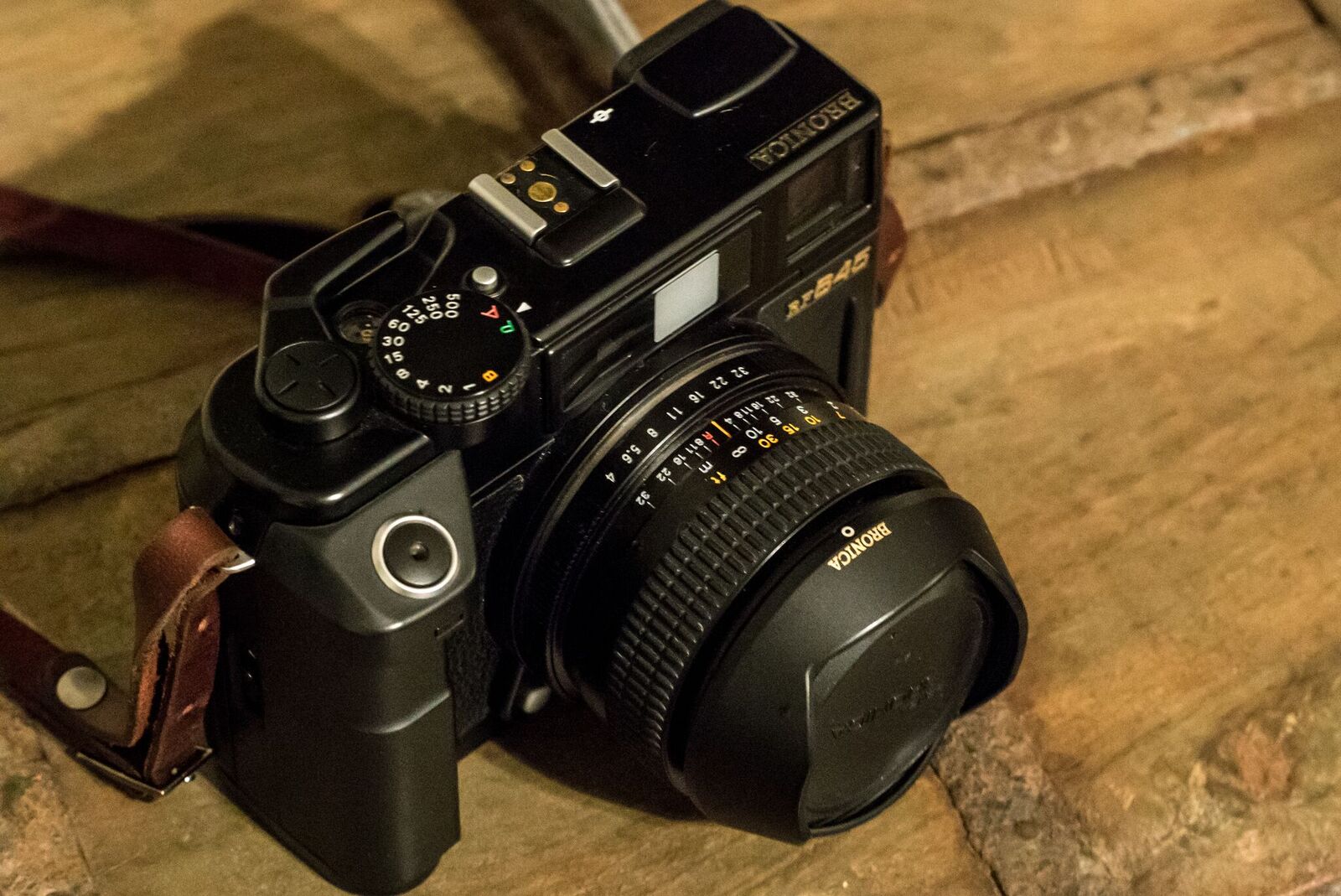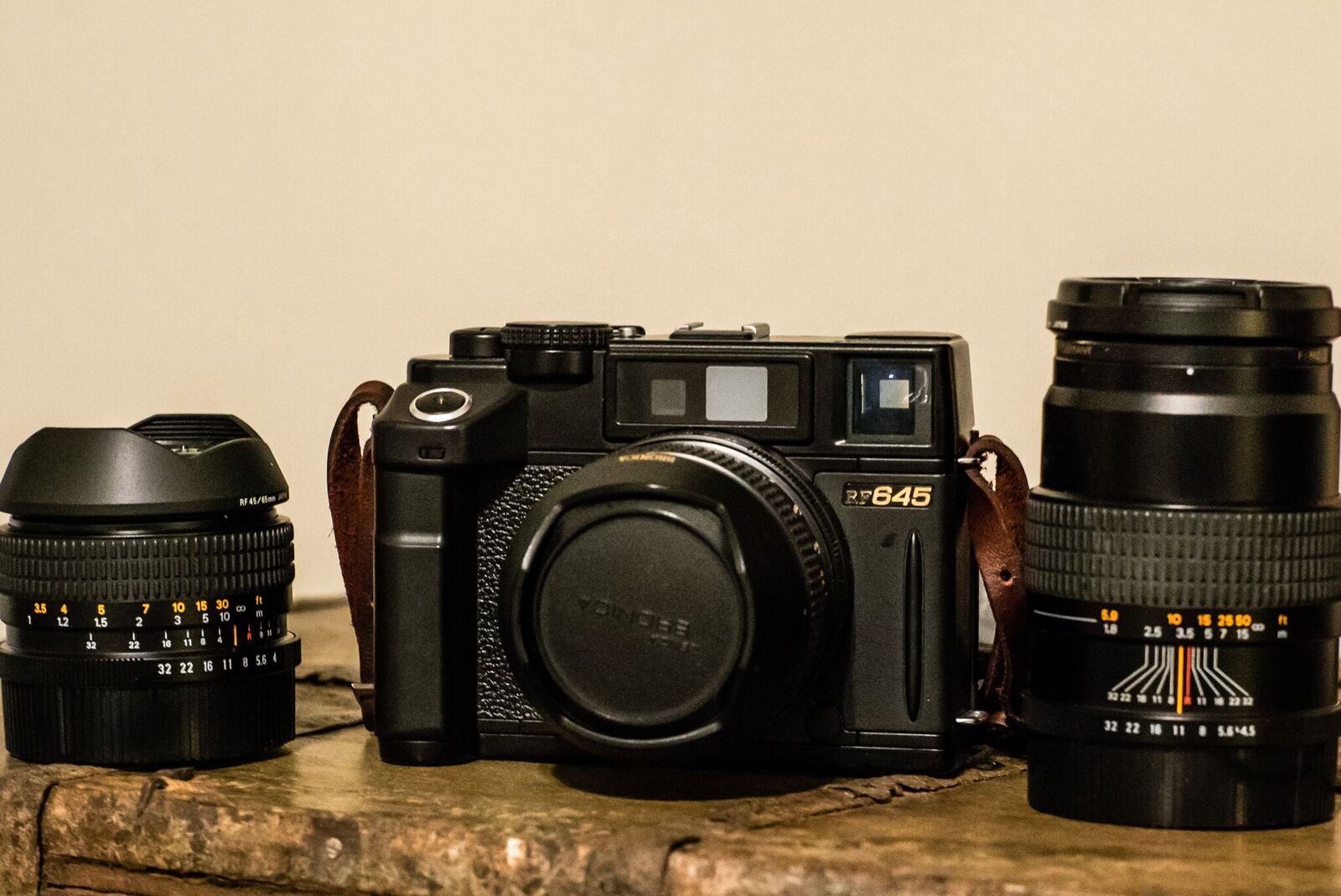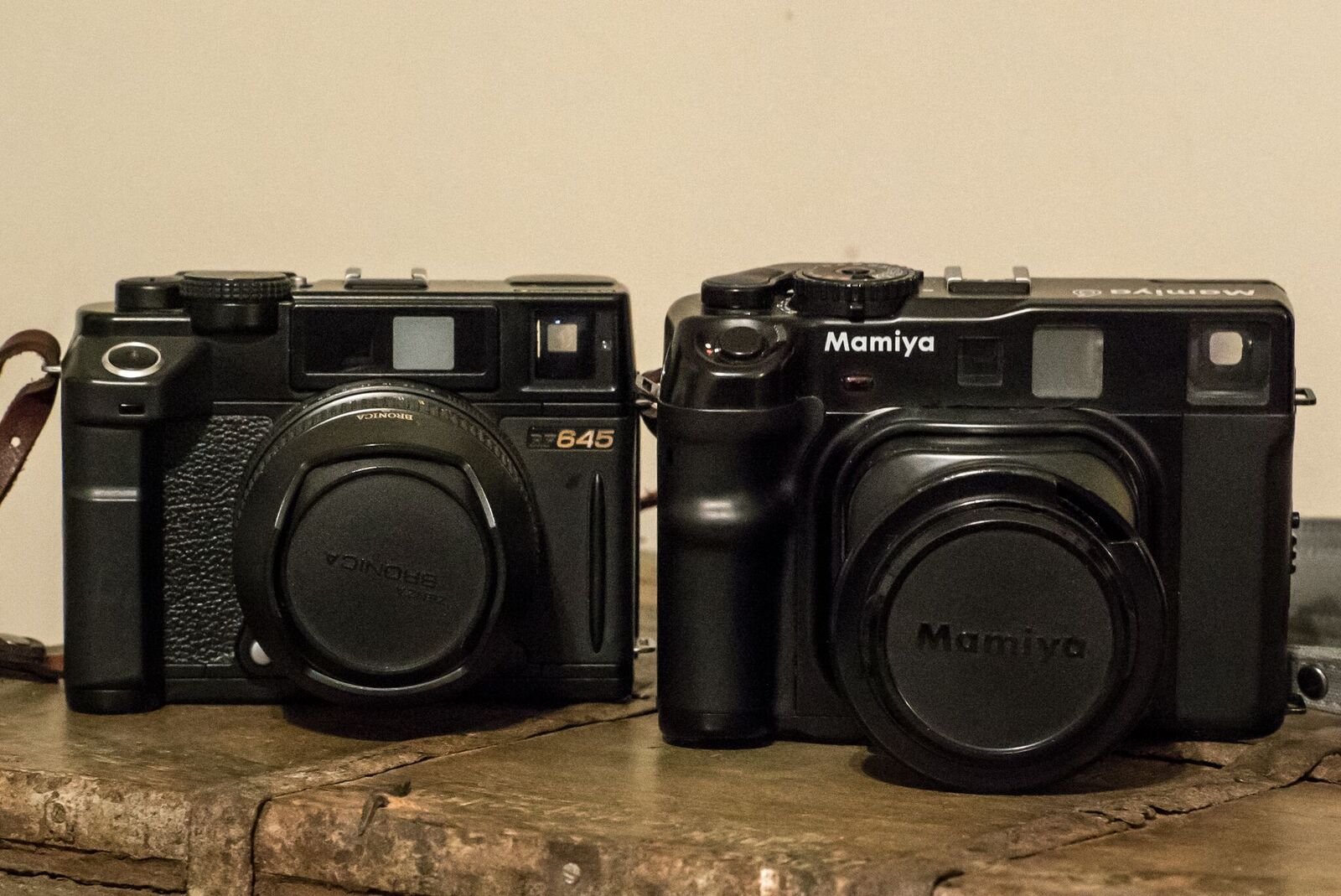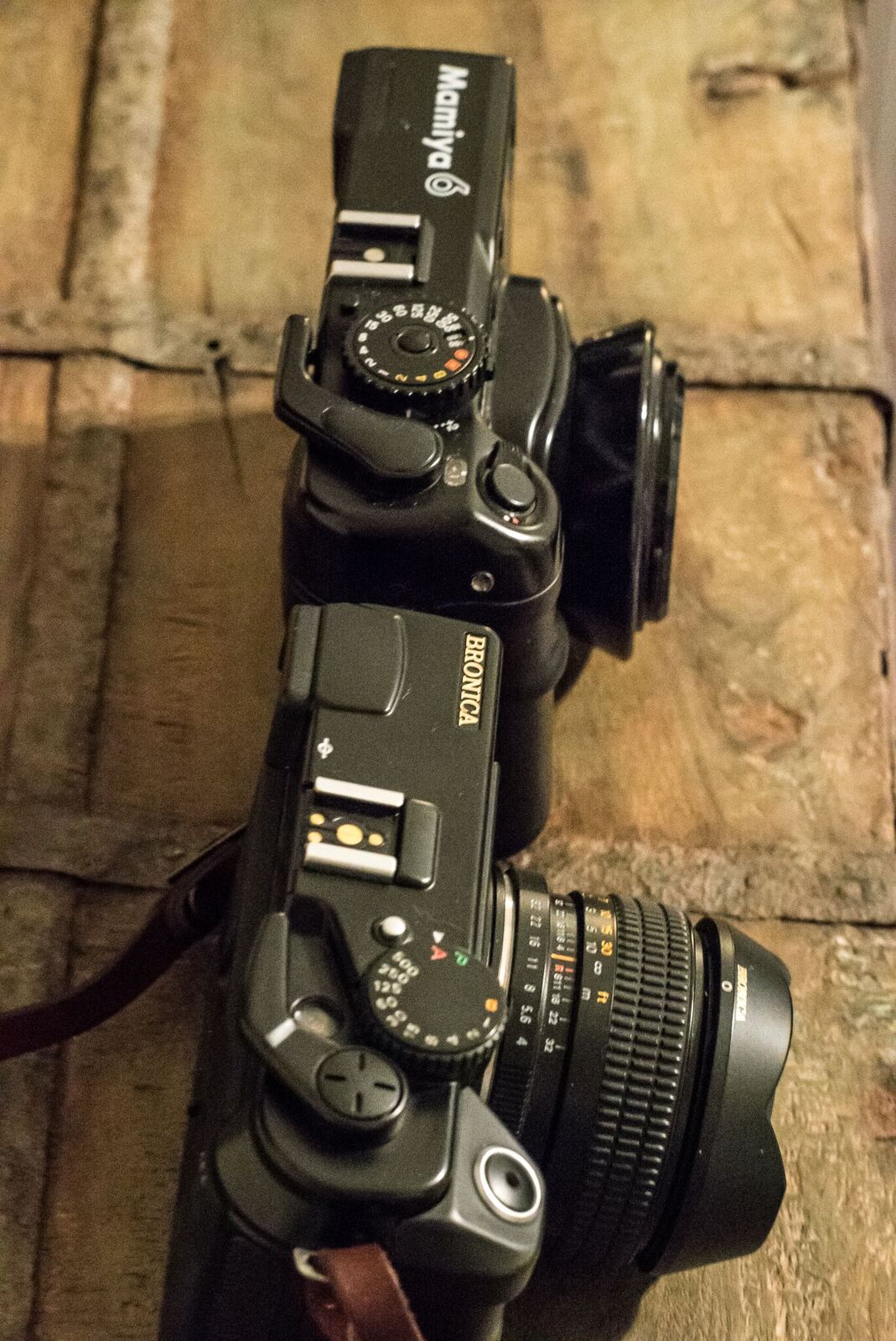As a photographer who travels quite a lot, I spend a lot of time trying to sort out the perfect travel kit. There is certainly variation based on the destination and / or the purpose of the trip, so kit "optimization" has variables that have to be considered each time you get ready to pack. The purpose often dictates format, a specific lens or set of lenses, and the camera choice as well. Mode of travel is a consideration too. Driving allows the most freedom of course, and I find that on road trips I will usually overpack terribly, but then who cares as long as you can squeeze in a few items of clothing; oh, and of course my travel companions and their gear. Most trips, though, have some level of size constraints, and so finding the right balance of format, choices, versatility etc. is important.
As for format, anything is fair game, but large format is less often the 1st choice when size is an issue. It's rare that I wouldn't include a small format set up of some sort. Even so, small format gear isn't the best choice for many things I shoot so I generally have a medium format camera along as well. There's size variation in all formats, but I'd say that within the rage of possible combinations medium format probably has the widest range of options. Yes, large format can range from big to huge, but like I said, not usually a consideration. If I'm going LF, it's my Super Speed Graphic or maybe my Toyo. For MF though, it could be anything from an old folder like my Mamiya Six (not the modern version 6, but the original Six) to a Hasselblad. Now my Hasselblads aren't necessarily the easiest to carry around, but I have taken one with a couple of lenses on hiking and biking trips before, so nothing is impossible. Still, as much as I like them, they're just not the most practical choice for most trips. The lenses alone are back breakingly heavy even if the bodies are manageable. If you can get by with a single lens the Fuji GW670 is not a bad travel companion, but still a little bulky. My Rolleiflex is a good traveler but is also fixed lens so limits its usefulness. The Pentax 67 is a beast but I do drag it along on trips more often than you'd think (you can justifiably question my sanity for that last statement).
For a single kit that can provide a versatile companion, though, it was for many years the Mamiya 6. It's fairly light weight, not super large, the lens retracts to make it even thinner, the 3 available lenses are a decent fit for my style, and the 6X6 is my favorite 120 format. It was, you could say, my travel companion of choice. That is until I read a review of the Bronica rf645. I tried to convince myself that it wouldn't be a good fit of course, as many of us do when we get in that early stage of GAS. It's 645 which is my least favorite format, the 3 lenses aren't even quite as well suited as the 3 lens set for the Mamiya and on and on...which means that within a month or so I had one to try. So how did the trial go? On to the review, but I will say that after 3 months of using the Bronica, I sold my Mamiya kit...okay, then I bought another one 6 months later but that's a different story for another review.
The Bronica rf645 is a modern rangefinder that was made from 2000 to 2005. It is sometimes referred to as the "camera everyone forgot." If you think of the time range I just gave you, you can see why. It had the unfortunate luck to be launched just in time for the world to switch to digital so it never really caught on. That doesn't mean, however, that it's not a very fine camera. The Bronica shoots 120 or 220, is in the 6X4.5 format, and held normally shoots in portrait orientation, which is, for some people, difficult or at least annoying. I had owned a Fuji previously that was also in that orientation so for me, it was / isn't an issue really. For a MF film camera the Bronica is innovative and advanced, and in the years following its release won many awards for design and innovation.
The camera has an exceptional viewfinder, very clear and easy to use (with one exception that I'll discuss later) with a large rangefinder patch. Like many MF cameras, the Bronica uses leaf shutters located in the lenses, but the shutter is electronically controlled and cocked automatically by a motor in the lens (no mechanical cocking by the body). With a leaf shutter flash syncs at all speeds, which goes up to 1/500. For camera control you can shoot in full manual, aperture priority and full program auto. The selected mode is displayed in the viewfinder and there is an AE lock and exposure compensation dial as well. One of my favorite features is the multi-exposure button on the back of the camera. Doing ME shots is as simple as winding, releasing the shutter and then hitting the ME button - release sequence for each subsequent exposure. Changing lenses is easy, no fiddling with a dark slide or setting and retracting a curtain, that all happens automatically as the lens is released. Metering is center weighted averaging but not TTL, however it adjusts for each lens and the camera is powered by 2 CR2 type 3v lithium batteries.
The camera was released with three Bronica Zenzanon lenses, a 45mm f/4, a 65mm f/4 and a 135mm f/4.5 and a dedicated flash unit, the RF20 (which is useful since it matches the camera’s portrait orientation). The original cameras have automatic framelines for the 65 and 135, with the 45mm using an external finder for framing. Apparently the 135mm was very hard to focus (not surprising for a rangefinder with a fairly short rangefinder base) and was subsequently replaced with a 100mm f/4.5. Cameras with serial numbers that start with a "0" have the 135mm framelines and serial numbers that start with a "1" have 100mm framelines. The 100mm is hard to find, but not impossible (I have one), but the 135mm is near impossible, not that you'd want it since you can't really focus it anyway (I suppose it would be a good collectible conversation piece if you're into that sort of thing). The 45 and 65mm lenses focus to 1 meter and the 100mm at 1.2 meters (there is a warning in the manual to shoot the 100mm at f11 or smaller at 1.2M, the depth of field is very shallow). In 35mm equivalents the lenses have a field of view that is basically 45mm=28mm, 65mm=40mm and 100mm=60mm. From a quality standpoint the lenses are really exceptional if somewhat slow (but not much different than the Mamiya 6 lenses to be fair).
The 6X4.5 format has never been my favorite but after using it quite a lot over the last year or so it does have some advantages for travel. The most obvious is the roll shot capacity, it's nice to have those extra 4 or 6 shots per roll (16 over 12 for 6X6, 10 for 6X7 and 8 for 6X9). The camera itself is a weight reducer at only 810 grams (body, which is about the same as a Nikon F100), 1110 grams with the 65mm lens, and getting a few more shots per roll helps in that department as well. Overall I'm much more comfortable with the 6X4.5 now after shooting with it for awhile, and it's a great compromise for a MF travel companion.
The camera really excels in ergonomics, with the 1 caveat that I have relatively large hands so your mileage may vary. There is a built in grip, all controls are well placed and easy to find / use and it has 3 strap lugs so it can be carried in 2 different orientations. Everything isn't perfect of course, there are always a few things that could be improved. I’ve read that the film transport system is prone to failure, although I don’t have any evidence to support that. While the camera has been out of production for quite a few years now, there are still parts and technicians available as Tamron supported the cameras until at least 2014. The film speed dial only goes up to ISO1600, but I suppose that’s really only a slight annoyance. Probably my biggest issue with the camera is actually common to both the Mamiya 6 and the Bronica, although it won't likely bother most of you. I shoot with my left eye, which is statistically a small population so I suppose it's not surprising that the design of the viewfinder puts all the information on the left edge. While that doesn't sound bad in principle, it is in practice because it is designed to be viewed at a slight angle, as in the right eye looking to the left. When viewed with the left eye it's extremely difficult to see the settings. Many other cameras have this setup, but in my experience only the Mamiya and the Bronica have some physical angle or barrier that makes it very difficult to see the information. Perhaps it's an issue for rangefinder viewfinder design, I'm not sure. My Nikon F6, for example, has the information in a similar location, but it is easy to see (the Pentax LX is the only camera that I own that has the information on the right side of the viewfinder, left eyed designer?). Like I said, it's probably not something for you to worry about, and I suppose if these are the only negatives I can come up with, this is an exceptional camera, which I'd say it is.
The Bronica has become my most used medium format camera for travel involving airplanes. It is also my favorite MF camera for multiple exposures, which is a creative tool I often use so even if I'm taking another MF camera, the Bronica usually finds its way into the bag. I use the 65mm 80% of the time, with the 100mm next as a portrait lens and then the 45mm. That's not surprising since I prefer "normal” lens and tend to use them for most of my shots. As a travel camera the Bronica is excellent, and I’d say that for a general purpose MF camera it is a good balance of compromises, that is, if you like rangefinders. Its size and well thought out design, as well as the quality of the lenses, make the Bronica rf645 a camera that definitely shouldn’t be forgotten.
Connect
More of Michael Fauscette's work can be seen on Instagram.














